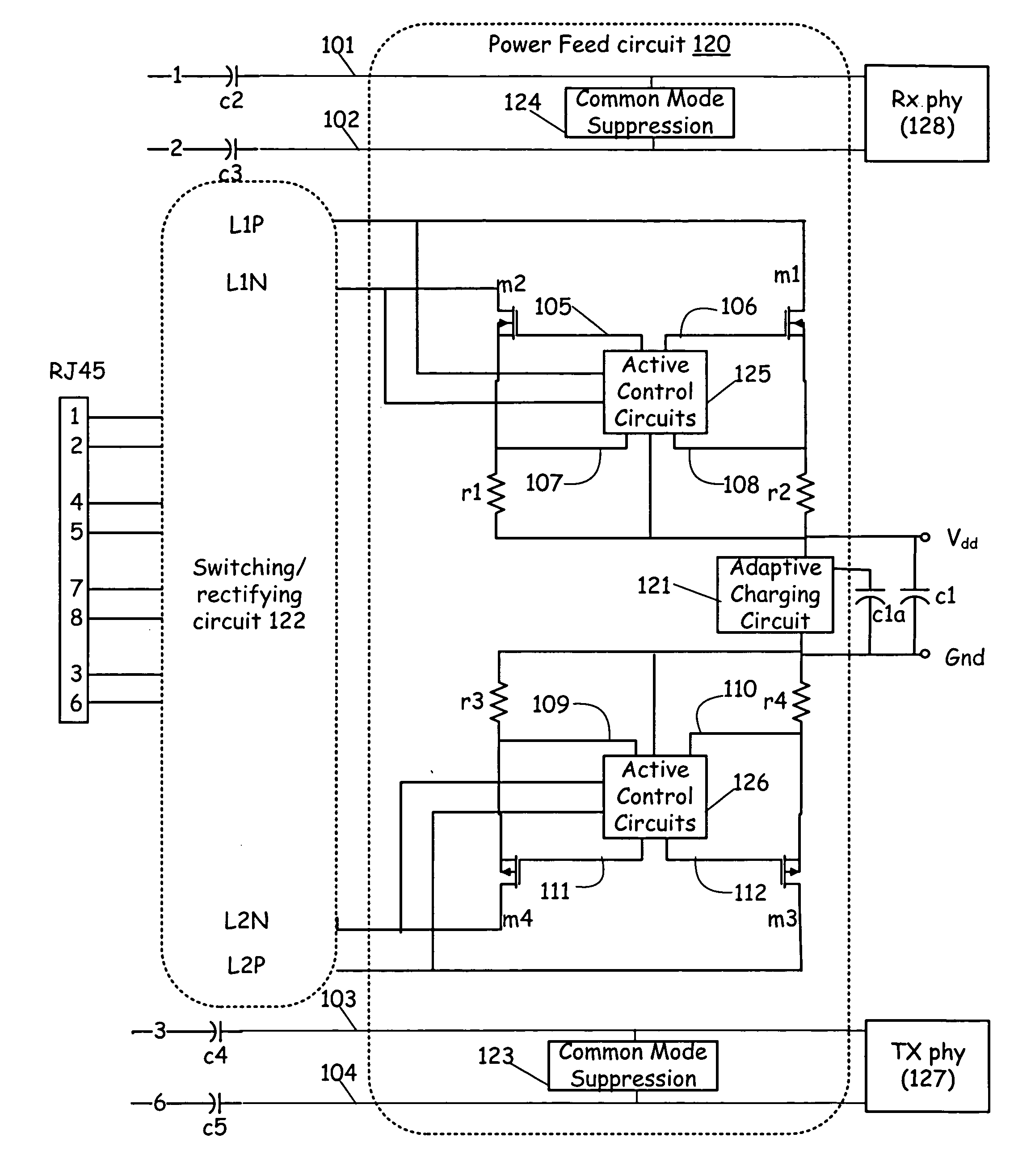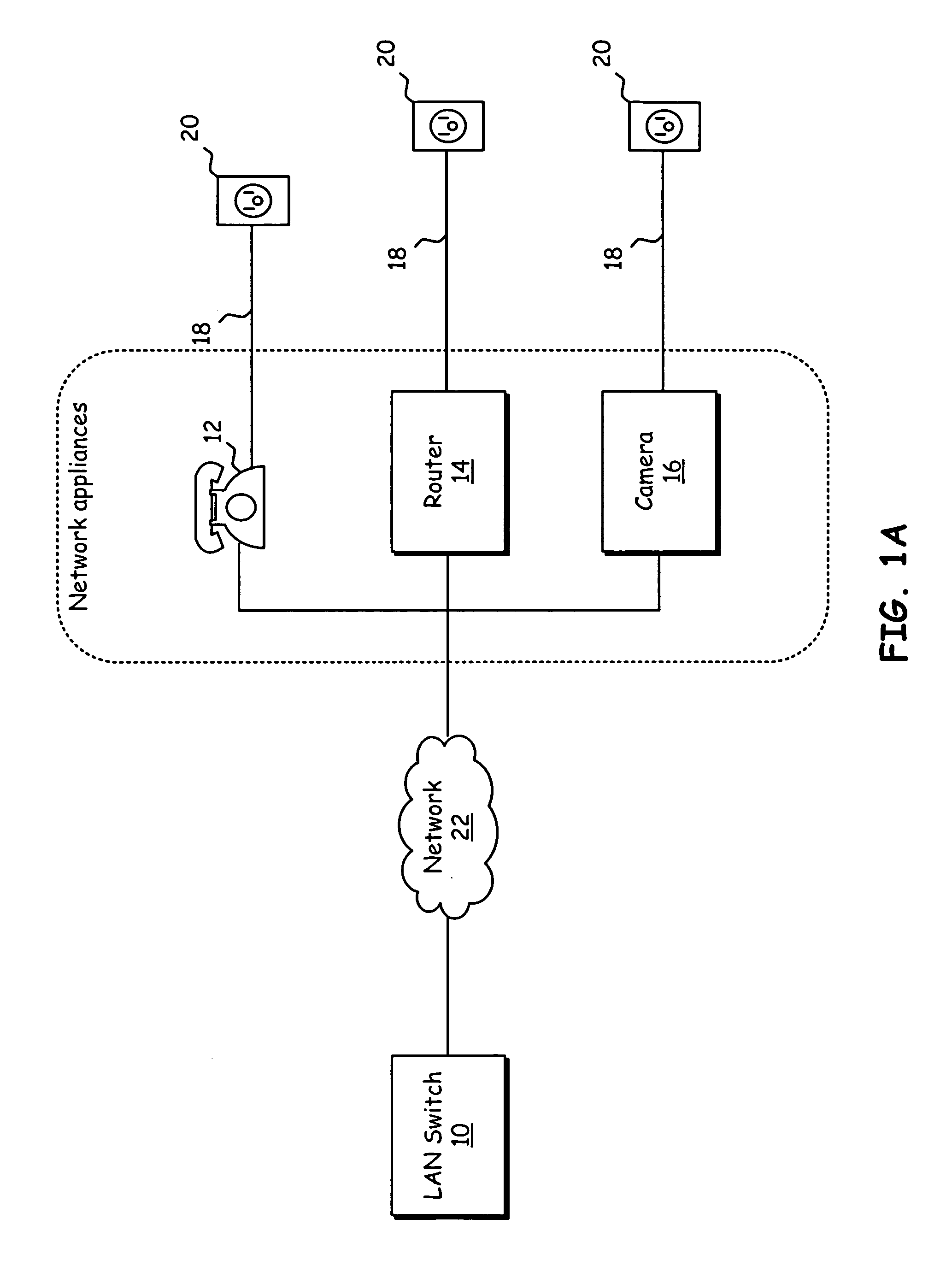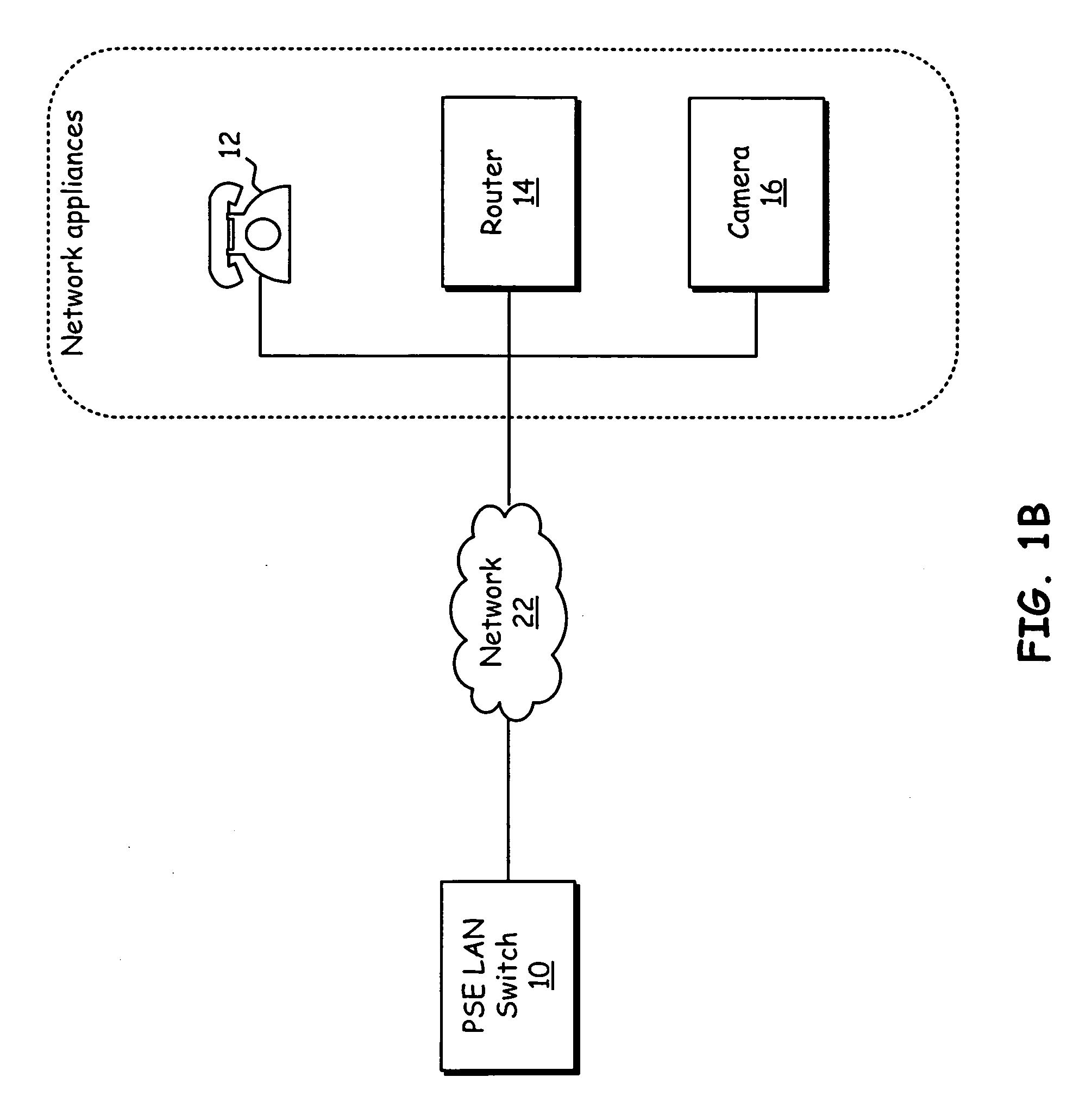Method for dynamic insertion loss control for 10/100/1000 mhz ethernet signaling
- Summary
- Abstract
- Description
- Claims
- Application Information
AI Technical Summary
Benefits of technology
Problems solved by technology
Method used
Image
Examples
Embodiment Construction
[0031] Preferred embodiments of the present invention are illustrated in the FIGs., like numerals being used to refer to like and corresponding parts of the various drawings.
[0032] The 802.3 Ethernet network Standards, which is incorporated herein by reference, allow loop powering of remote Ethernet network devices (802.3). The Power over Ethernet (PoE) standard and other like standards intends to standardize the delivery of power over Ethernet network cables in order to have remote client devices powered through the network connection. The side of link that supplies the power is referred to as Powered Supply Equipment (PSE). The side of link that receives the power is referred to as the Powered device (PD).
[0033] Replacing the magnetic transformer of prior PoE systems while maintaining the functionality of the transformer has been subsumed into the embodiments of the present invention. In order to subsume the functionality of the transformer, the circuits provided by embodiments ...
PUM
 Login to View More
Login to View More Abstract
Description
Claims
Application Information
 Login to View More
Login to View More - R&D
- Intellectual Property
- Life Sciences
- Materials
- Tech Scout
- Unparalleled Data Quality
- Higher Quality Content
- 60% Fewer Hallucinations
Browse by: Latest US Patents, China's latest patents, Technical Efficacy Thesaurus, Application Domain, Technology Topic, Popular Technical Reports.
© 2025 PatSnap. All rights reserved.Legal|Privacy policy|Modern Slavery Act Transparency Statement|Sitemap|About US| Contact US: help@patsnap.com



